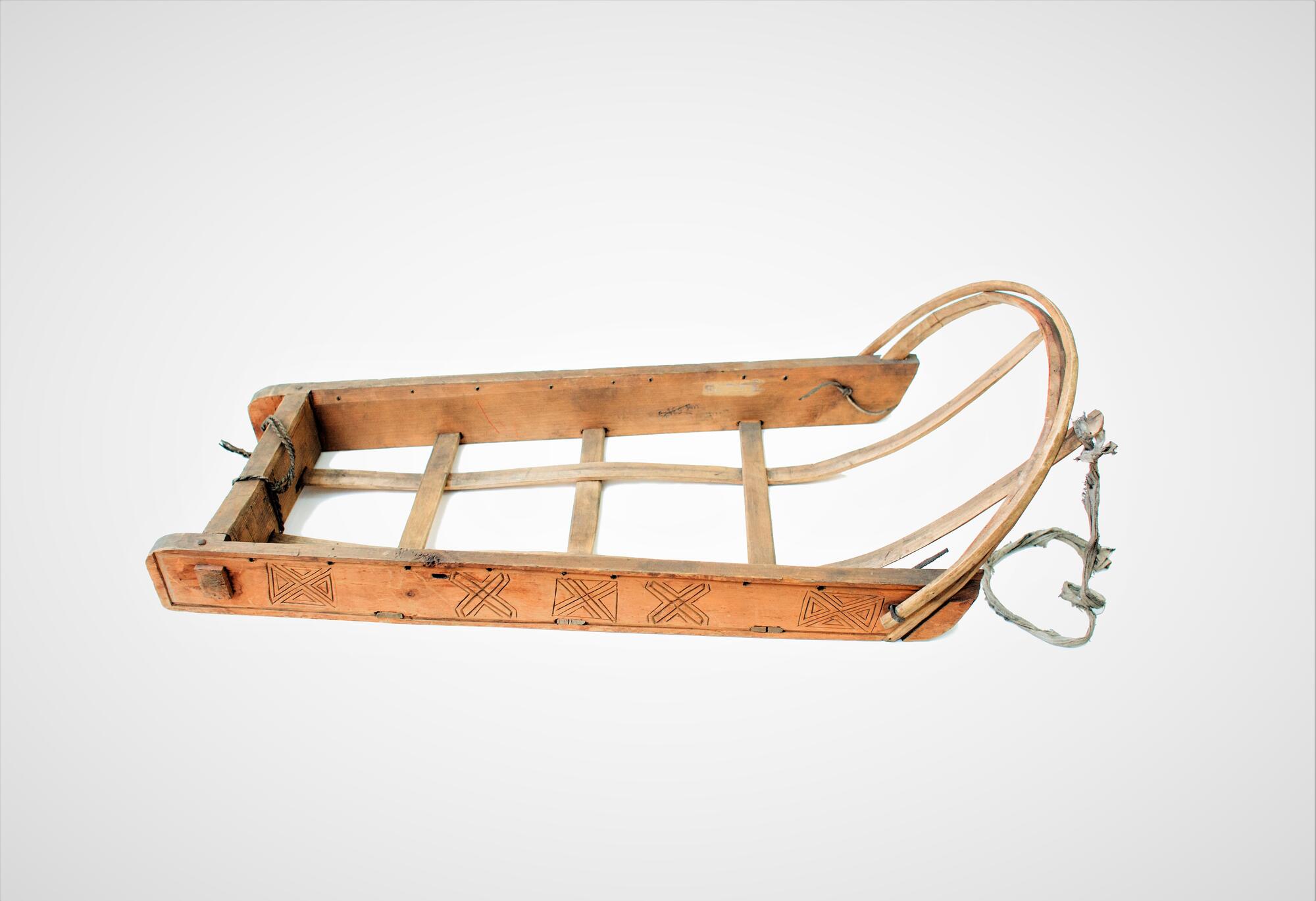Tuvan families were very fond of children and treated them with great care. The child’s cradle, the kawai, was considered a sacred object. Therefore, Tuvans strictly followed rituals when making a cradle.
They began to make a cradle only after the birth of the child. Tuvans associated kawai with the female womb. Therefore, according to the beliefs, one could not prepare a cradle for a child while he had his own — the mother’s womb.
The kawai was made of cedar, spruce or poplar. Only dried, old viable trees were used — so that the child would live as long and be healthy.
The bottom of the cradle was assembled from three main pieces of wood, which were joined together with four smaller crosspieces. They also had walls attached to their sides. The walls were then joined at the top and bottom — at the headboard and at the feet. All the small fasteners were made of poplar wood.
Cradles were never broken or thrown away. As a rule, Tuvan families had more than one child. Children were raised in the same cradle, which passed from the eldest to the youngest.
Since ancient times, Tuvans celebrated the festival of the ‘first cradle’ — on the third or seventh day after the birth of a child. Until then, he was inseparable with his mother and slept in the same bed with her. The holiday was considered a rite of purification of the mother and child from the filth that always accompanies childbirth — an impure act from the point of view of traditional beliefs.
Before putting a newborn baby in a cradle, it was washed with sanctified juniper water. ‘Edek, ” dried sheep droppings that served as a diaper, was placed under the baby. It let in and absorbed moisture, retained heat, and was believed to have disinfectant properties.
The baby’s umbilical cord was placed in a small sack that was tied to the headboard of the cradle. By their number one could tell at once how many little children there were in the family. The headboard also had amulets, such as a bear’s claw, so that the child could sleep soundly and peacefully. A sack with an umbilical cord hung over the kawai until the baby left its first bed. Children slept in a cradle for a long time, sometimes up to two years.
They began to make a cradle only after the birth of the child. Tuvans associated kawai with the female womb. Therefore, according to the beliefs, one could not prepare a cradle for a child while he had his own — the mother’s womb.
The kawai was made of cedar, spruce or poplar. Only dried, old viable trees were used — so that the child would live as long and be healthy.
The bottom of the cradle was assembled from three main pieces of wood, which were joined together with four smaller crosspieces. They also had walls attached to their sides. The walls were then joined at the top and bottom — at the headboard and at the feet. All the small fasteners were made of poplar wood.
Cradles were never broken or thrown away. As a rule, Tuvan families had more than one child. Children were raised in the same cradle, which passed from the eldest to the youngest.
Since ancient times, Tuvans celebrated the festival of the ‘first cradle’ — on the third or seventh day after the birth of a child. Until then, he was inseparable with his mother and slept in the same bed with her. The holiday was considered a rite of purification of the mother and child from the filth that always accompanies childbirth — an impure act from the point of view of traditional beliefs.
Before putting a newborn baby in a cradle, it was washed with sanctified juniper water. ‘Edek, ” dried sheep droppings that served as a diaper, was placed under the baby. It let in and absorbed moisture, retained heat, and was believed to have disinfectant properties.
The baby’s umbilical cord was placed in a small sack that was tied to the headboard of the cradle. By their number one could tell at once how many little children there were in the family. The headboard also had amulets, such as a bear’s claw, so that the child could sleep soundly and peacefully. A sack with an umbilical cord hung over the kawai until the baby left its first bed. Children slept in a cradle for a long time, sometimes up to two years.



